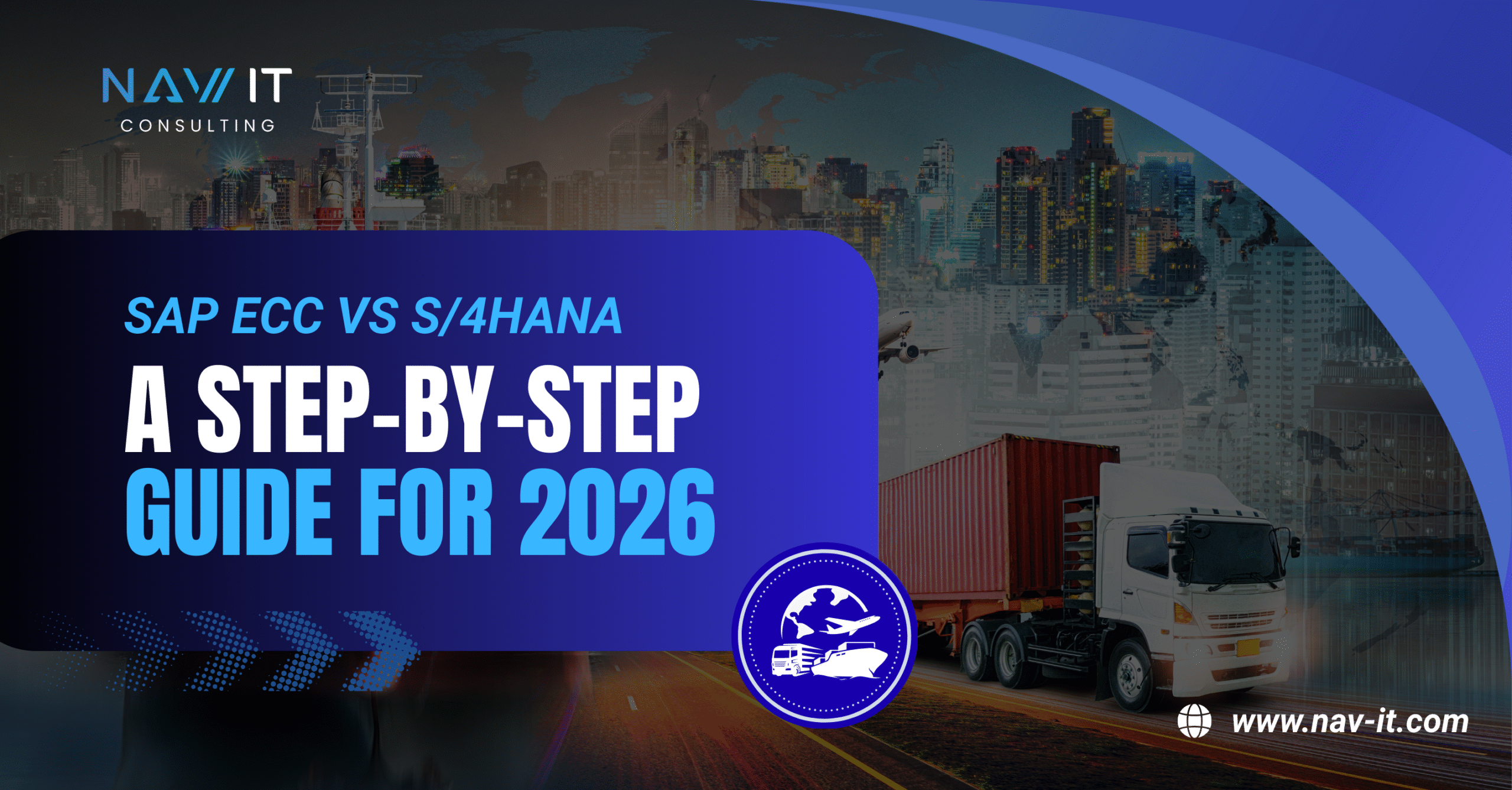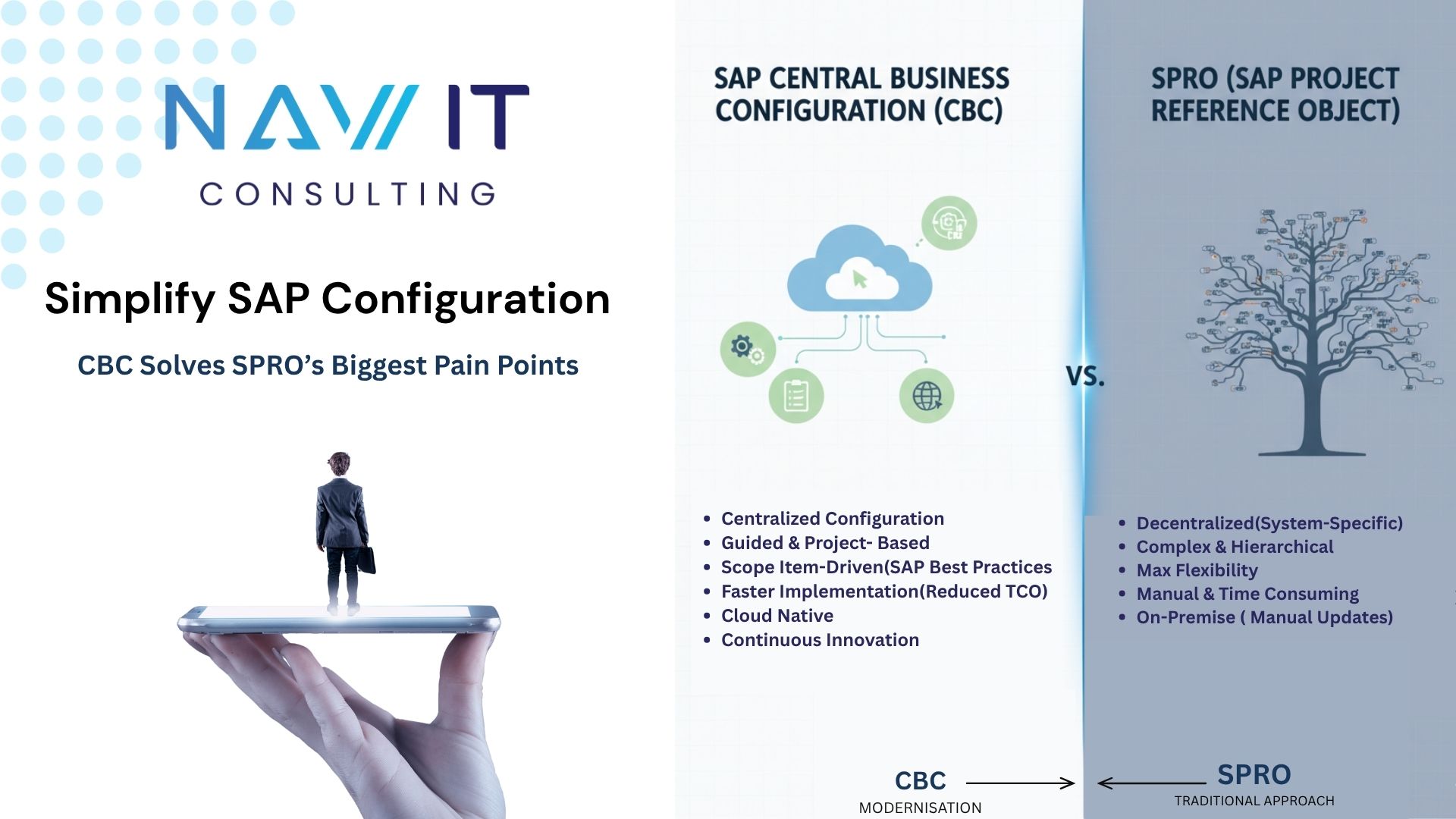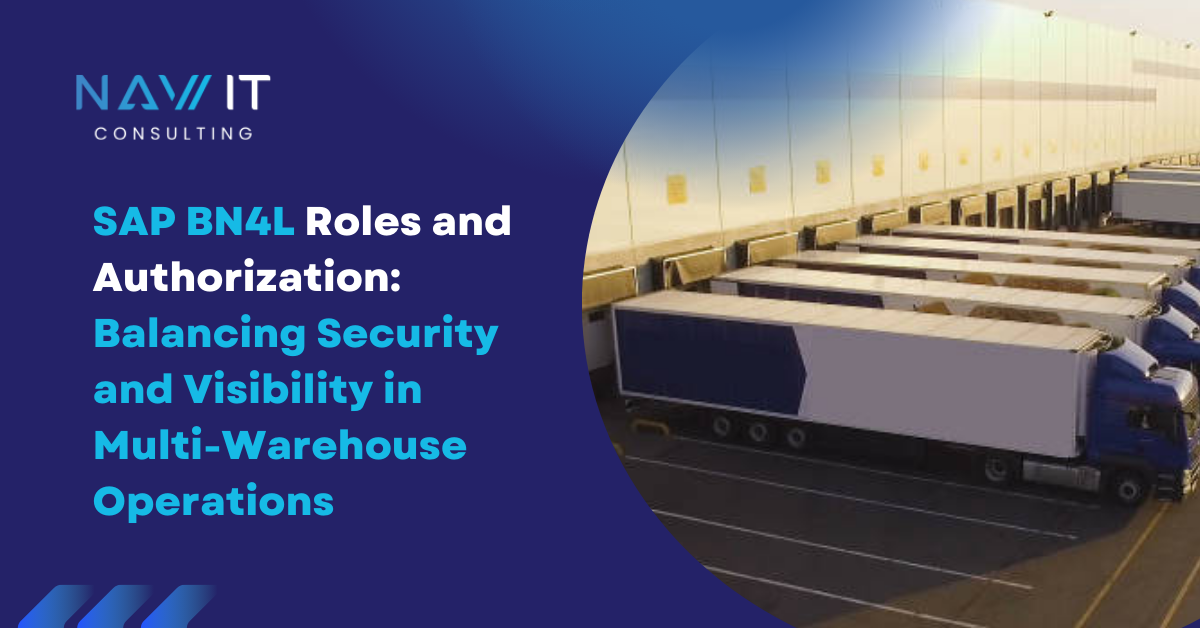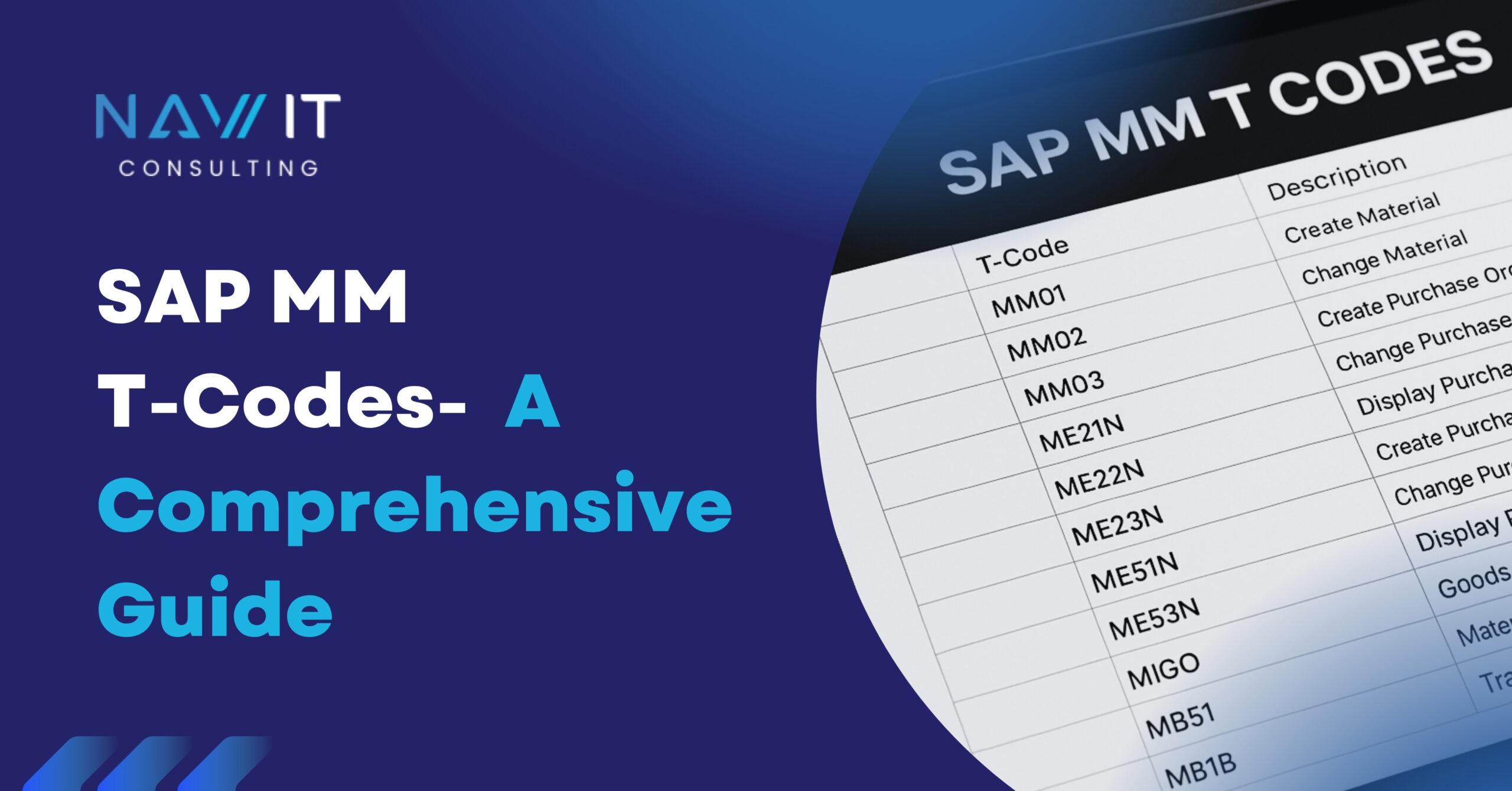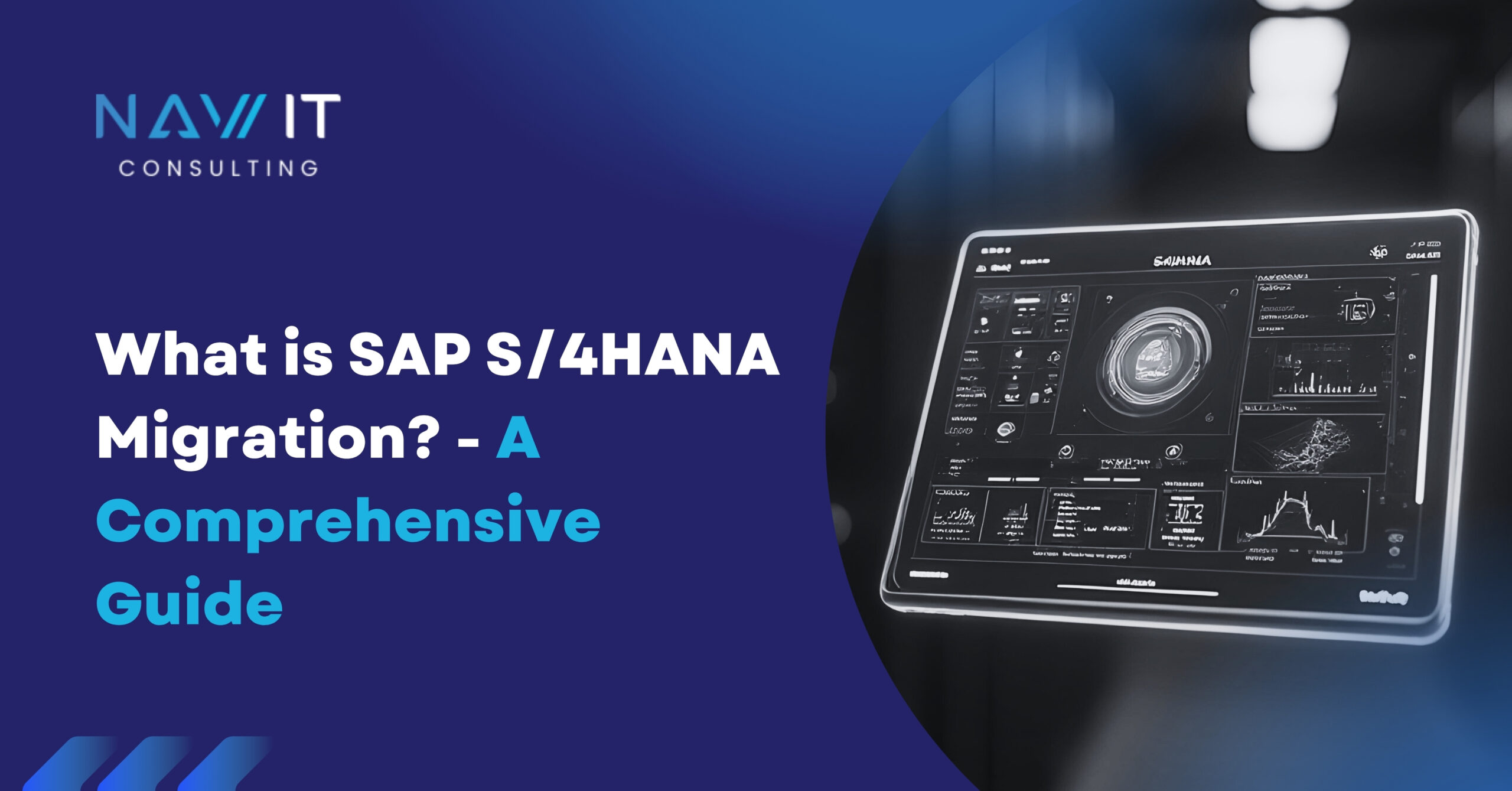What is SAP Supply Chain Management?
SAP Supply Chain Management (SAP SCM) is a suite of software tools designed to manage the entire flow of goods, information, and finances within a company’s supply chain. It essentially helps businesses oversee all the activities involved in getting a product from raw materials to the customer.
Here is a breakdown of what SAP Supply Chain Management offers:
Planning: Forecasting demand, increasing inventory levels and planning production schedules.
Cooperation: To ensure that all parties are on the same page, by connecting with suppliers, distributors and others.
Execution: Managing warehouse operations, transport logistics and ensuring on time delivery.
Visibility: Providing real-time data and insight into the entire supply chain to enable better decision-making.
Objectives that businesses can achieve using SAP Supply Chain Management (SCM) Solutions are:
- Increased efficiency and productivity
- Reduced costs
- Improved customer satisfaction
- Increased flexibility to respond to changes in the market
Think of SAP Supply Chain Management solutions as a digital conductor for your entire supply chain, to keep things in line and ensure its smooth run.
Join our LinkedIn Network for updates, tips, professional growth and many more:
SAP Supply Chain Management Components:
SAP Supply Chain Management products are composed of several components that work together to deal with different aspects of the supply chain. The four main functions that can broadly be divided into these components are: collaboration, planning, coordination and execution.
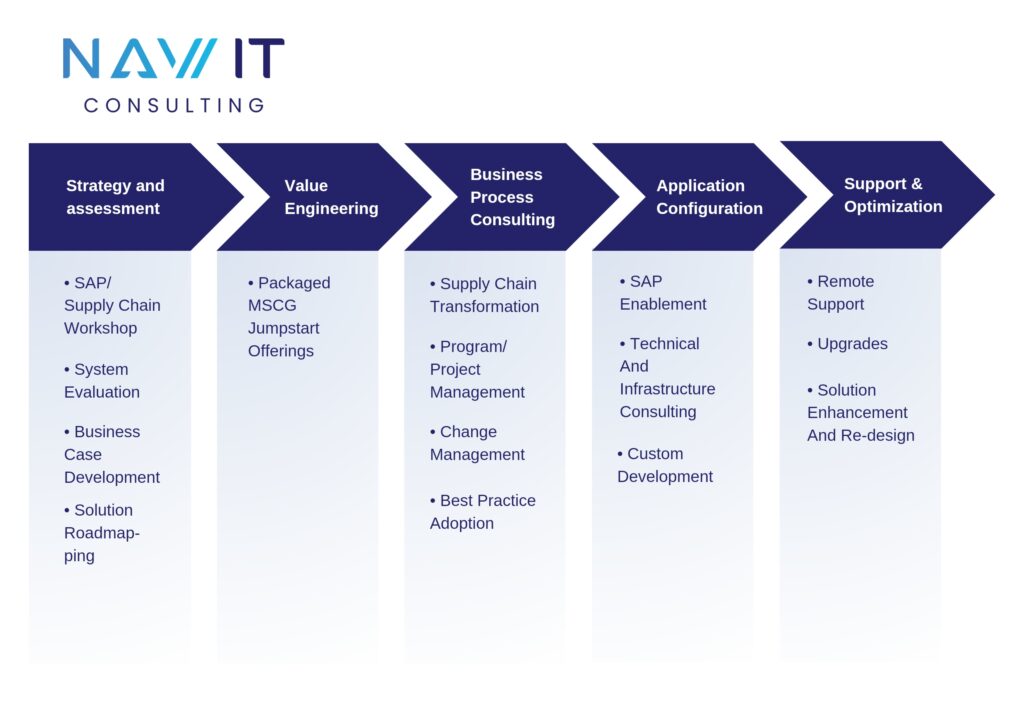
Collaboration:
It allows information sharing and communication among different parties within the supply chain, e.g. suppliers, distributors or customers. This promotes transparency and facilitates better coordination of activities.
Planning:
It involves forecasting demand, optimizing inventory levels and planning production schedules. In order to meet customer demand, it assists businesses in ensuring that they have the right material at the right time.
Coordination:
It simplifies the movement of goods and information through the supply chain. This includes the management of warehouse operations, transport logistics and the timely delivery of goods.
Execution:
Provides the means to carry out the planned activities efficiently. Tasks such as the management of purchase orders, processing invoices and tracking shipments are also covered.
Some of the key components of these categories are explained below:
Demand Planning:
Provides a forecast of customer demand for products and services. This information is crucial for the planning of production, inventory management and procurement decisions.
Sales and Operations Planning (S&OP):
It brings together different departments of the company, such as sales, marketing and manufacturing, to develop a production plan that meets customer needs while taking account of resource constraints.
Material Requirements Planning (MRP):
Calculates the materials, components and subassemblies necessary to produce finished goods. It considers factors like production schedules, bill of materials (BOM), and inventory levels.
Inventory Management:
This optimizes the level of inventories held by a company. Finding a balance where sufficient stocks are available to meet demand and avoid overstocks that can trigger capital requirements is part of this process.
Warehouse Management:
It is responsible for the management of activities in a warehouse, such as receiving goods, putting them away, picking up, packing and shipping.
Transportation Management:
Planning, optimizing and managing the transport of goods across the entire supply chain. Selection of carriers, routes and tracking of consignments are also included under this.
SAP Supply Chain Management brings together these components in order to provide businesses with a complete set of tools for better management of the supply chains.
Advantages of integrated SAP Supply Chain Management:
In addition to the benefits of integrated Supply Chain Management as a whole, there are specific advantages for selecting an integrated SAP Supply Chain Management system:
1. Seamless Integration:
Pre-built Connectors: SAP provides preprogrammed connectors for seamless integration of its SCM modules with other SAP solutions such as Enterprise Resource Planning and Customer Relationship Management. This eliminates the need for complex custom integration, ensuring that all your business data flow smoothly in a single system.
Real-Time Visibility: You gain real-time visibility across all aspects of the supply chain with everything on one platform. This allows faster decision making and early responses to emerging problems.
2. Enhanced Functionality:
Advanced Analytics: In order to give you more detailed information on your supply chain, SAP Supply Chain Management uses powerful Analytics tools. To achieve greater efficiency, you can identify trends, predict bottlenecks and optimize processes.
Machine Learning and AI: The SAP system has machine learning capabilities that can automatically perform tasks, improve forecasting accuracy and recommend the best levels of inventory.
3. Streamlined Processes:
Standardized Workflows: SAP enforces the standardization of processes in all parts of your supply chain, reducing errors and increasing operational coherence.
Automated Tasks: Repetitive tasks, such as order processing, inventory management, and shipment tracking, can be automated, freeing up your workforce for more strategic activities.
4. Improved Collaboration:
Supplier and Partner Integration: Through its built-in collaboration tools, SAP facilitates collaboration with suppliers, distributors and other partners. This encourages better communication and transparency in the entire supply chain.
Centralized Communication: A single platform allows for centralized communication, eliminating information silos and ensuring everyone has access to the latest data.
5. Reduced Costs:
Increased Efficiency: The overall efficiency of the supply chain is driven by simplified processes, automation and better forecasting which results in cost savings.
Optimized Inventory Levels: You will be able to prevent stockouts and excess stocks, both of which can cost you in the long run, through better information on demand and inventory levels.
Improved Negotiation Leverage: You will be able to negotiate more effectively with suppliers and carriers, potentially reducing procurement costs, with better data and information.
6. Scalability and Flexibility:
Modular Design: The SAP Supply Chain Management is a configurable system, allowing you to use the components that best suit your individual needs and increase in size as your business grows.
Adaptability to Change: You can adapt to changing market conditions or customer demands more efficiently, thanks to the integration of SAP Supply Chain Management into your system.
In addition to offering several benefits for Integrated Supply Chain Management, the choice of an SAP system is also more advantageous in terms of its seamless integration, advanced functionalities and emphasis on process simplification and collaboration improvement.
History and evolution of SAP Supply Chain Management:
The evolution of the SAP suite goes hand in hand with its journey into supply chain management. This is a timeline that shows the key milestones:
Early Days (1970s):
1972: SAP is founded, focusing on the development of standard software for real time data processing. This provided the basis for integration of business systems, even though it did not explicitly set out SCM.
1973: The first commercial product, SAP R/1, is released. The system offered basic functionality, such as inventory control and material management, which is of relevance to supply chains.
Focus on core business functions from (1980s to 1990s):
1979: SAP R/2 arrives – a mainframe-based system that marked a shift to larger scale business applications. In areas such as production plans and material requirements management (MRP), it provided improved capacity.
1992: SAP R/3 – the architecture of the client / server, revolutionizing the business software environment. It provided a solid foundation for future supply chain modules, even though it was not solely a supply chain management module.
1990s: The introduction of separate SAP modules focused on specific supply chain functions takes place in this decade, such as inventory management, and sales and operations planning (S&OP).
Rise of dedicated Supply Chain Management Solutions (Early 2000s):
Early 2000s: SAP R/3, introduction of SAP APO complements the core functionality. This has been an important step towards the development of a dedicated set of supply chain management tools.
2000s: Additional applications such as Supply Network Collaboration (SNC) and Transportation Management (TM) continued to develop into the suite. The collaboration with partners and transport logistics are covered by these modules.
Integration and Innovation (2000s-Present):
Mid-2000s: The SAP Business Process Platform brings the concept of a unified platform to life. This enables businesses to select and integrate specific SAP applications, including Supply Chain Management modules, which best suits its needs.
2007s: SAP introduces SAP Supply Chain Management 5.1, a major consolidation effort that brings together several separate modules, such as APO, WM, and TM, into a complete Supply Chain Management suite.
Present Day: With a focus on the use of new technologies, SAP Supply Chain Management is continuing to develop. For better forecasting, automated tasks and optimal decision making in the supply chain, Machine Learning (ML) and Artificial Intelligence (AI) have been incorporated.
Looking Ahead: The continued progress in SAP Supply Chain Management solutions is evidence of the company’s commitment to innovation. Some potential future directions can be found here:
Deeper integration into the Internet of Things: Realtime tracking of goods and materials throughout the supply chain could be enabled by the Internet of Things IoT, which would provide even more visibility and control.
Focus on Sustainability: In the context of supply chain management, sustainability has become an important issue. The features that help companies monitor their environmental impact and optimize processes for environmentally friendly practices could be integrated into SAP solutions.
Industry-Specific Solutions: More specialized Supply Chain Management solutions tailored to the specific needs of different sectors could be developed by SAP.
SAP aims to make it easier for businesses to manage their supply chains with more efficiency, flexibility and visibility by remaining at the forefront of technological developments.
The importance of SAP Supply Chain Management:
Effective supply chain management is essential for business success in today’s highly complex worldwide market. SAP Supply Chain Management (SAP SCM) offers a powerful set of tools that can significantly improve how companies manage the flow of goods, information and cash across their supply chain. It’s because of SAP Supply Chain Management that it’s so important:
Increased Efficiency and Productivity:
Streamlined Processes: SAP Supply Chain Management can automate repetitive tasks and enforce standardized workflows, reducing errors and increasing efficiency in all areas.
Real-Time Visibility: A common platform allows faster decision-making and proactive response to issues that may arise, giving a clearer view of all activities within the supply chain.
Improved Forecasting: In order to better plan and allocate resources, advanced Analytics and Artificial Intelligence tools help predict demand more precisely.
Reduced Costs:
Optimized Inventory Levels: Businesses can avoid stock shortages and excess inventories, both of which may be costly, by having better insight into demand and inventory.
Negotiation Leverage: Companies can negotiate more effectively with suppliers and carriers, potentially reducing procurement costs, through better data and insight.
Reduced Waste: The reduction of waste generated in the supply chain, for example by Raw Material to Finished Goods, can be achieved through better planning and coordination across the entire supply chain.
Enhanced Customer Satisfaction:
Faster Time-to-Market: The development and launch cycles of products may be accelerated by simplified procedures and better collaboration.
On-Time Deliveries: Increased visibility and coordination will lead to more accurate delivery schedules as well as higher on time delivery rates.
Improved Product Quality: Overall product quality can be improved by improving the control of materials and production processes.
Greater Agility and Resilience:
Improved Risk Management: Proactive risk identification and mitigation is enabled by real time data and insights.
Enhanced Adaptability: Businesses are more effective at adapting to changing market conditions or disruptions, thanks to the ability to work together and exchange information in a seamless manner across their supply chains.
Innovation Opportunities: By promoting new ideas and product development, integrated data and improved collaboration can be used to support innovation.
Competitive Advantage:
Businesses gain an important edge over their competitors when they implement SAP Supply Chain Management. They can be more efficient, respond faster to changes in the market and provide better customer services. This will lead to increased profitability and a strengthened position on the market.
Join our LinkedIn Network for updates, tips, professional growth and many more:
Additionally, SAP Supply Chain Management offers specific advantages:
Seamless Integration: Integrates into the unified business system with other SAP solutions such as ERP and CRM.
Advanced Functionality: Leverages machine learning and artificial intelligence for more intelligent decision making and automation.
Focus on Collaboration: Collaboration with suppliers, distributors and other partners is facilitated by built-in tools.
A powerful tool that can change the way businesses deal with their supply chains is SAP Supply Chain Management. SAP Supply Chain Management enables companies to cope with today’s evolving market environment through improved efficiency, reduced costs, increased customer satisfaction and agileness.
Conclusion:
SAP Supply Chain Management is a critical solution for today’s enterprises, which has revolutionized how to navigate the complexity of global supply chains. SAP Supply Chain Management enables companies to make better use of their resources, cut costs and achieve greater success in today’s challenging market landscape through a suite of tools and seamless integration between them. SAP Supply Chain Management equips businesses with the flexibility and resilience needed to thrive in an ever-changing market environment by using advanced Analytics, Realtime visibility & collaboration features. Businesses embark on a journey to streamline processes, improve customer satisfaction and sustain growth in a dynamic business environment by adopting SAP SCM.
FAQs About SAP Supply Chain Management (SAP SCM)
What is SAP Supply Chain Management?
A set of software tools designed to monitor the seamless movement of goods, data and financial information throughout a company’s supply chain is provided by SAP Supply Chain Management. It helps enterprises to manage all activities involved in the shipment of a product from raw materials to their customers.
What are the benefits of using SAP Supply Chain Management?
Increased efficiency, reduced costs, improved customer satisfaction, greater flexibility and competitive advantages are several benefits to use SAP Supply Chain Management.
What are some of the challenges of implementing SAP Supply Chain Management?
The initial cost of implementation, the need to integrate the system with existing infrastructure, and the need to train staff are some of the challenges.
Does SAP Supply Chain Management integrate with other business systems?
Yes, SAP Supply Chain Management is designed for seamless integration with other SAP solutions such as ERP (Enterprise Resource Planning) and CRM (Customer Relationship Management).
Can SAP Supply Chain Management be customized to fit the needs of my business?
Yes, SAP Supply Chain Management offers a modular design allowing you to use the components that best suit your needs.
